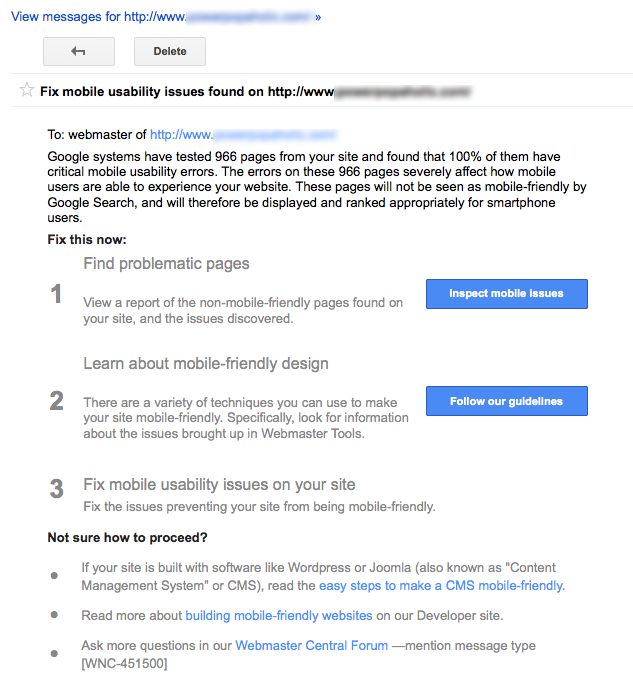“Mobilegeddon” — like it or not — will happen [fergcorp_cdt_single date=”21 April 2015″]
March 31, 2015: It all started with an ominous but not completely unexpected e-mail from Google:
“Google systems have tested 966 pages from your site and found that 100% of them have critical mobile usability errors. The errors on these 966 pages severely affect how mobile users are able to experience your website. These pages will not be seen as mobile-friendly by Google Search, and will therefore be displayed appropriately for smartphone users.”
I took a deep breath, fired up my CMS, GWT, plus a text editor, and went to work. Within a fairly short period of time, I came to a decision about the WordPress theme that I’ve been using for years. Sorry, old beloved theme — you were crafted in the desktop-centric design era and had to go before Mobilegeddon goes into full effect on 4/21/15.
Luckily WordPress theme templates have grown up in the last few years and there was a plethora of designs and features to pick from. When searching for an appropriate mobile-friendly theme, I used the search term “responsive.”
But making my site truly mobile-friendly was more than simply a matter of swapping out a theme. I had to worry about all the prior customization I had made on my site as well. To eliminate any possibility that my old plug-ins would conflict with my new theme, I disabled all plug-ins before making the switch. Once the new theme was in place, I began reactivating them.
My best advice for picking a theme to replace your old one is that you don’t drastically change your layout much.
Once you install your theme, check what’s “missing” from your site. Often the new installation has a few default widgets that will pick up existing content, but you’ll need to check for things the theme doesn’t automatically insert, and add them to your layout. The process for me took no more than an hour.
 I still had to use GWT to isolate and stamp out “blocked resources” errors but this didn’t take more than a few hours. I’m happy to say that my site is now ready for 4/21/15 and those 966 rank-killing errors are just a bed memory now.
I still had to use GWT to isolate and stamp out “blocked resources” errors but this didn’t take more than a few hours. I’m happy to say that my site is now ready for 4/21/15 and those 966 rank-killing errors are just a bed memory now.
While my old plugins may have caused issues, a shiny new set of plugins designed to deal with Google issues are available to all WP users. The dreaded 301 and 404 errors can be solved easily with this Redirection plugin (https://wordpress.org/plugins/redirection/).
What was your experience? Let us know here at Didit.
- 10 Mistakes to Avoid When Using QR Codes for Marketing - September 20, 2023
- Kevin Lee on How AI Changes the SEO Landscape - August 31, 2023
- The Power of Compound Marketing: Kevin Lee Presents @ 1MediaWorld 2023 Global Conference - March 7, 2023


